By Bill Adams
Observations include features I personally liked, or disliked, and some I don’t understand. Due to the crowds and commotion in setting up, vendors were not interviewed. Opinions are from a past-his-prime player no longer active in the fire service. Comments made, questions asked, and what I’d do might be germane to today’s purchasers. Photos courtesy of Kimberly Adams.
Slide-out preconnect trays are gaining more popularity as manufacturers reduce the footprint of traditional midship pump houses and gain lost space in low rear hose beds.
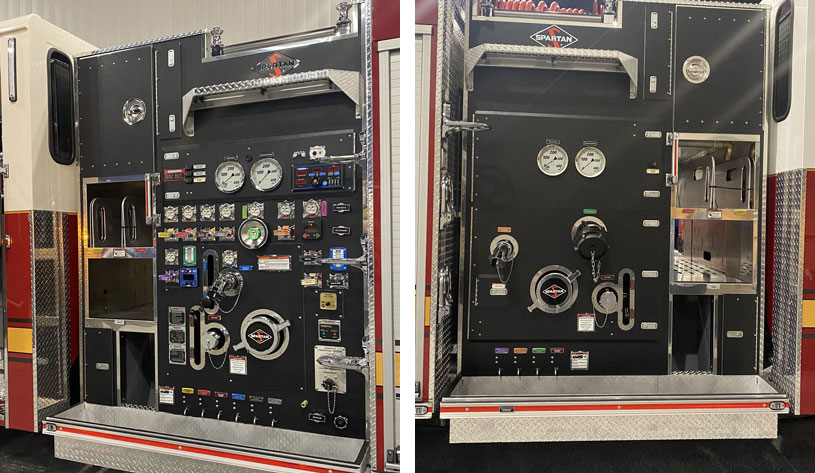
Photo 1 (left). This Spartan ER, with a wider than normal pump house, has two trays of preconnects about 5 feet from ground level forward of all controls. There’s room underneath for additional trays labeled dead lay. A transverse compartment is on top with two smaller ones at the bottom each side. One has a door; the other accommodates a donut roll of LDH. Photo 2 (right). This side’s panel has a set of 6-inch master gauges and vertically hinged swing-open doors for pump house access. Treadplate wraps around the cab and compartment corners to protect the paint – if you spec’d it.
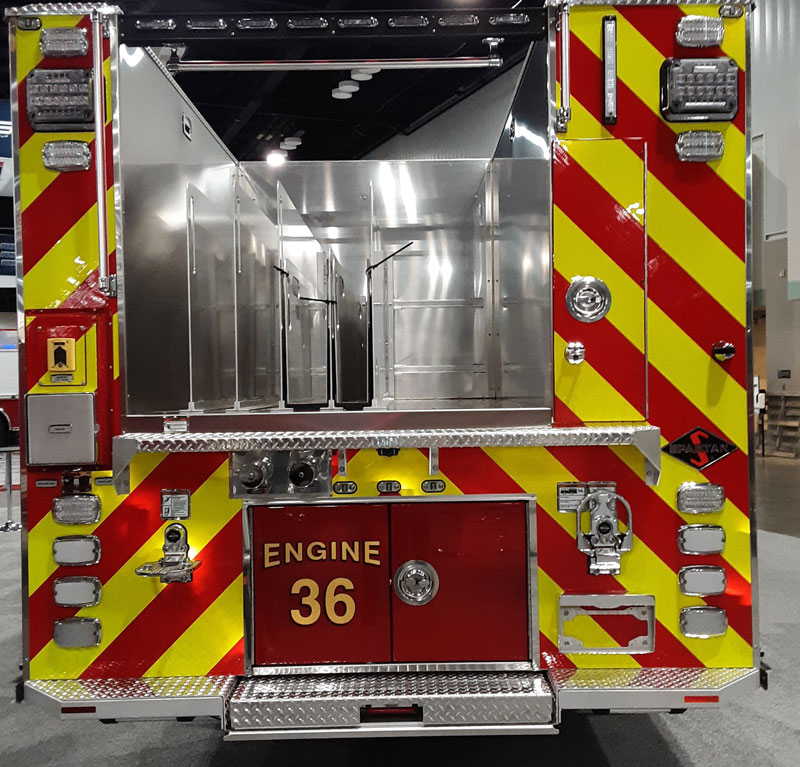
3. Another Spartan ER with trays for single stacked preconnects in the main hosebed. Spartan, CustomFIRE, KME, Pierce, and Saulsbury have used rear slide-out trays for preconnects for years. Many were located beneath the supply hosebed. It makes sense.
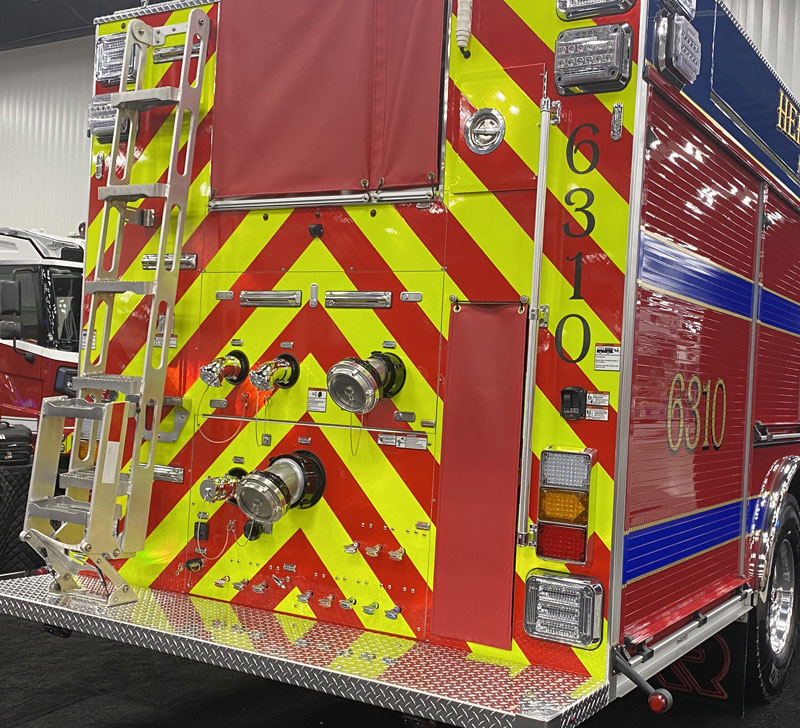
4. Behind the pull-down hook-and-loop cover to the right of this Rosenbauer’s rear pump hose connections are two stacked trays of 200 feet of preconnected hose each. Trays facilitate loading on the ground. The full-height compartment on the rig’s right side is 12-inches-deep, full height.
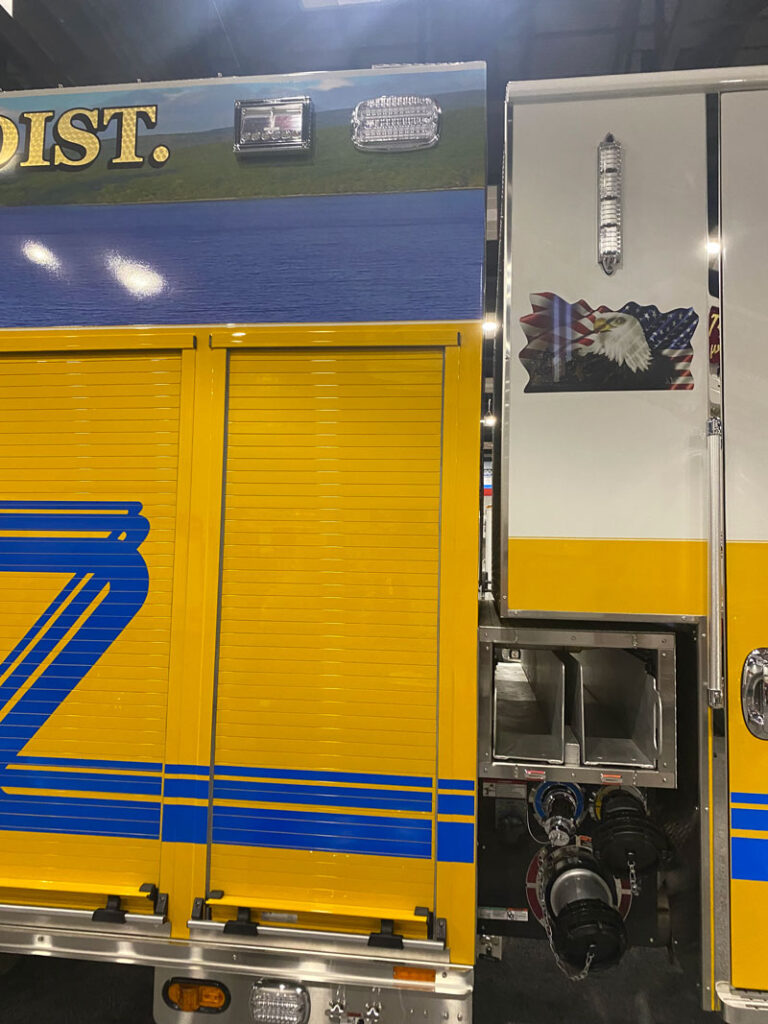
5. KME slide trays are a popular configuration many manufacturers use with nontraditional pump and panel locations. The operator’s panel is on the opposite side in a similarly sized narrow compartment aft of the trays.
Bumpers and Sirens
A popular electro-mechanical siren weighs almost 50 pounds, is just over 10 inches high, almost 10 inches wide, and a hair less than 14 inches long. They’ve been mounted on bumpers’ decks, semi-recessed into, and even flush mounted behind the bumper. No rational commentator will say which method is best. Supposedly, the siren manufacturer has not either. Are locations chosen for aesthetics or because the bumper real estate is needed for storage? Ask the siren manufacturer if there is a difference in performance and siren longevity (warranty) for each location. Get the answer in writing. Purchasers should prioritize front bumper usage. Do you spec the bumper around the siren or locate the siren around the intended firematic usage of the bumper? Good luck.
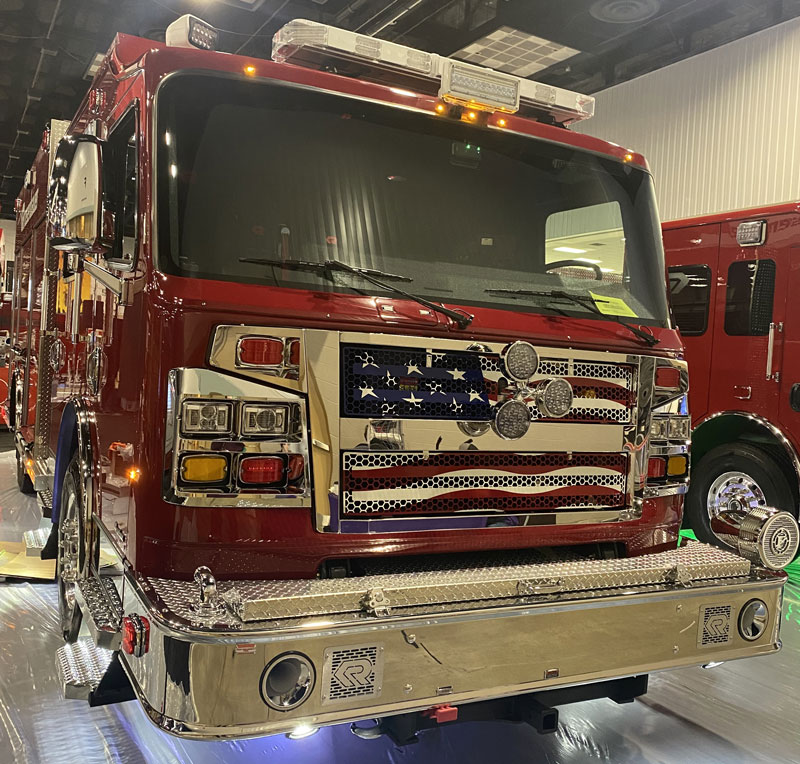
6. Rosenbauer mounted the siren on the deck to the far driver’s side of a 14-inch extended bumper. An extended length enclosed hose tray and left side discharge elbow had priority.
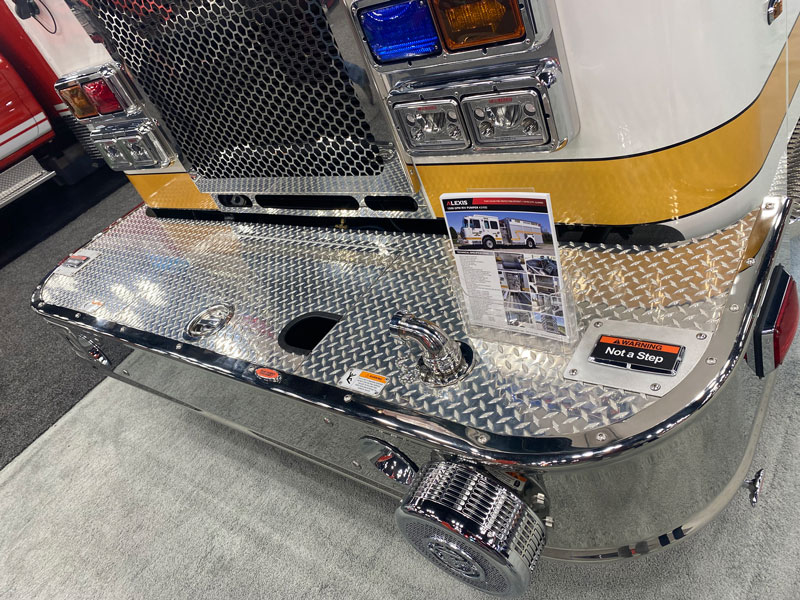
7. Alexis semirecessed this siren on a longer extended front bumper with a single center-mounted hose well and right-hand side discharge elbow.
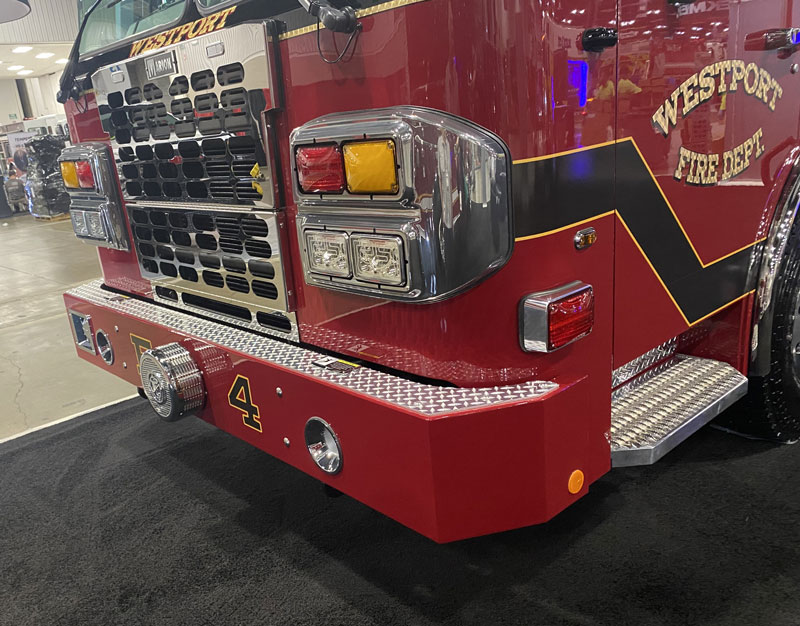
8. Common with departments having overall length concerns or having no firematic usage for extending a front bumper is the standard 6-extension like the one on this Marion with a semi-recessed siren.
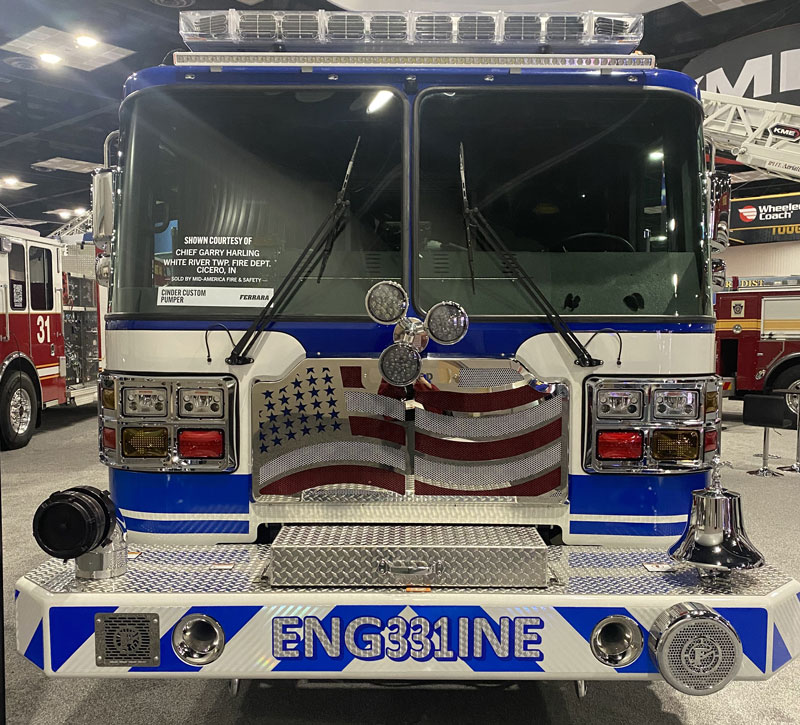
9. The overall length of this Ferrara pumper could have been shortened by mounting the semi-recessed siren on top of the apron next to the bell.
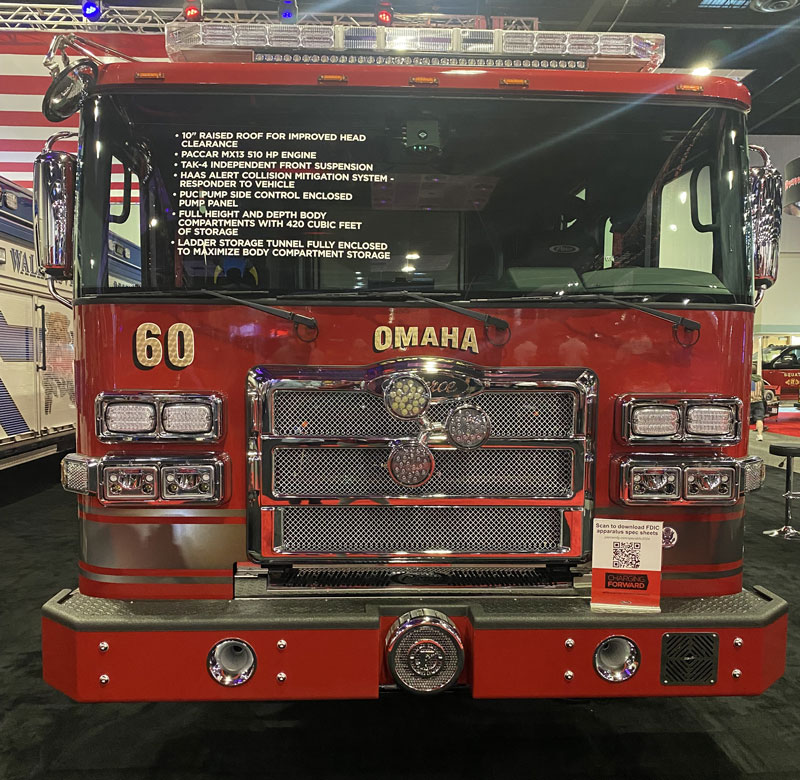
10. Some OEMs have made cut-outs in the bumper to box-in the forward portion of the siren. This Pierce’s cut-out is located in the center.
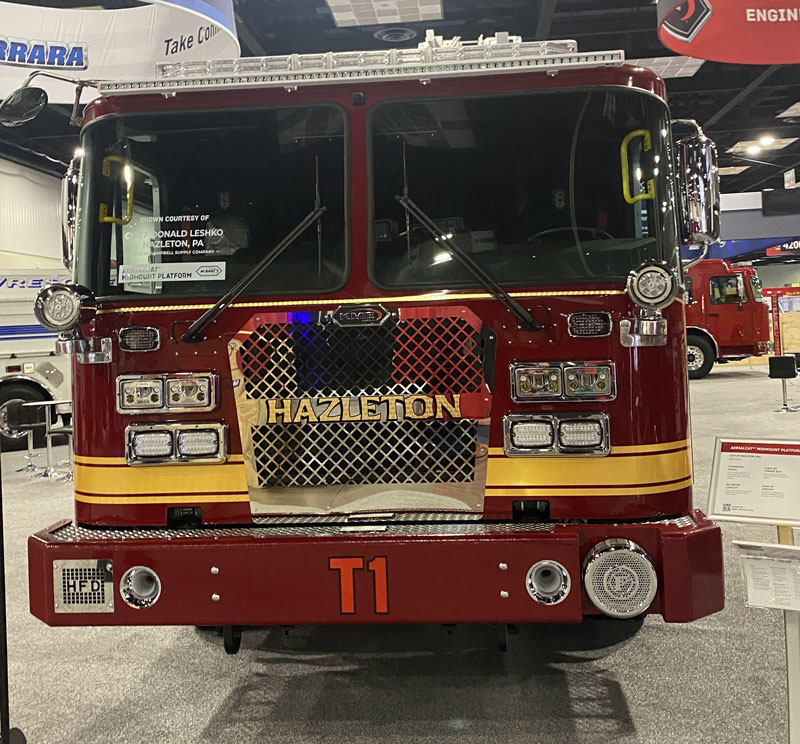
11. This KME cut-out is located on the driver’s side.

12. E-ONE fully recessed the siren on this quint so its front is flush with the bumper’s fascia. Years ago, it was thought the first four or five inches of a mechanical siren had to be exposed for the “air in – air out” theory. Ask the siren manufacturer – in writing – if fully recessing the siren affects performance or warranty.
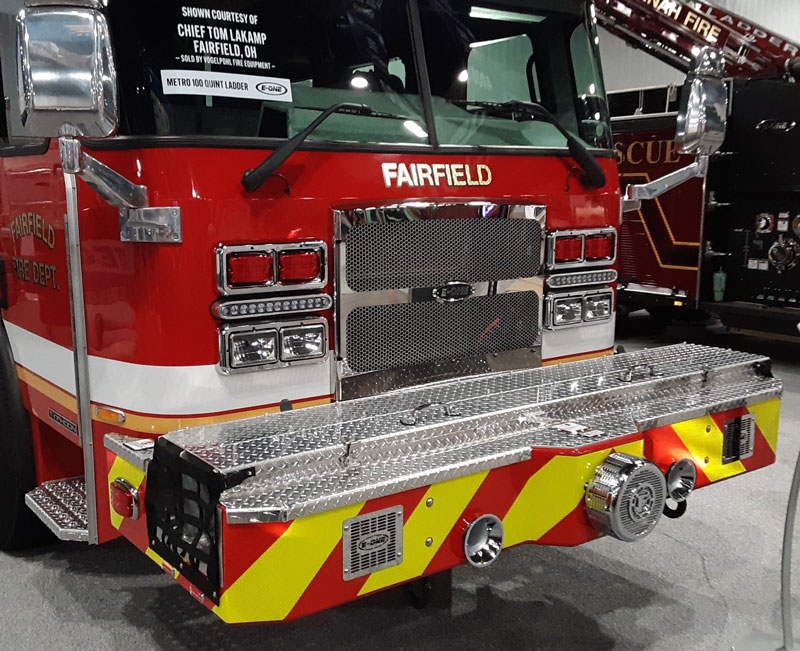
13. To maintain a flat flooring in this E-ONE bumper preconnect flooring, the center portion was humped-out (extended) in the middle section for a semi-recessed siren.
Angled Bumpers
Apparatus manufacturers make in-house built plain steel bumpers and there also commercially available versions. Polished stainless steel ones usually come in different widths. Does your bumper extend beyond the width of the cab it’s protecting? Did you want it to? The front corners of some extended bumpers are often tapered under the pretense of shortening the wall-to-wall turning radius. Is there a viable reduction in wall-to-wall turning radius? One large eastern metropolitan department reduced its wall-to-wall turning radius by 6-inches by angling its 96-inch wide bumper to about 82-inches-wide over its 21-inch extension. Prioritize bumper usage. Are you tapering it for looks?
Divider Hand Holes
The purchasing specifications read “hand holes shall be provided on the rear vertical edges of hosebed dividers.” All of the following photos meet that ambiguous specification requirement.
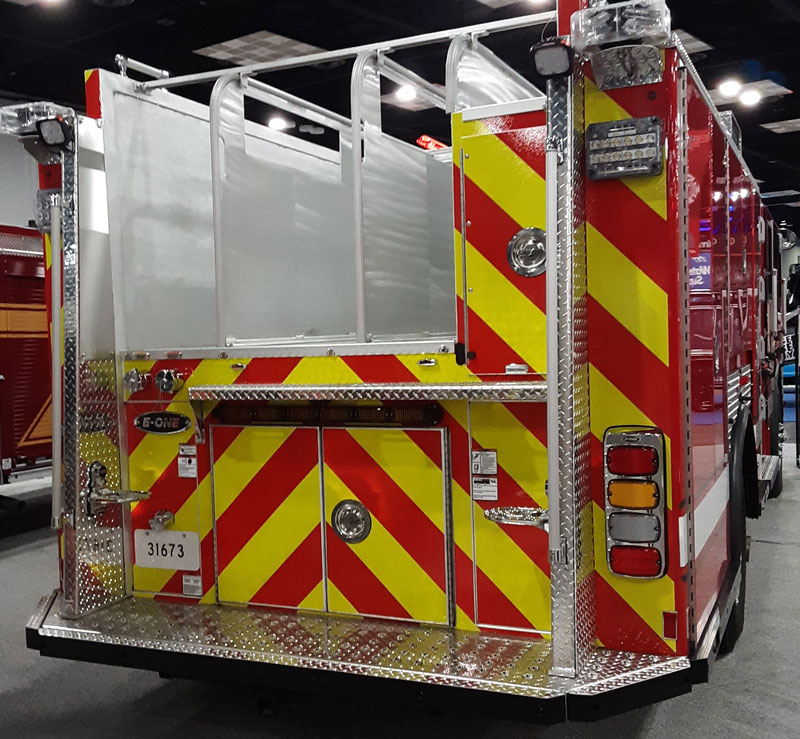
14. One hand hole is provided on this E-ONE divider. Note the rectangular cut-out on this rig’s divider top and the angle cut-outs on the one in photo 15. They are to facilitate hose loading in deep hosebeds. Both rigs are by the same manufacturer who probably followed each purchaser’s detailed specifications.
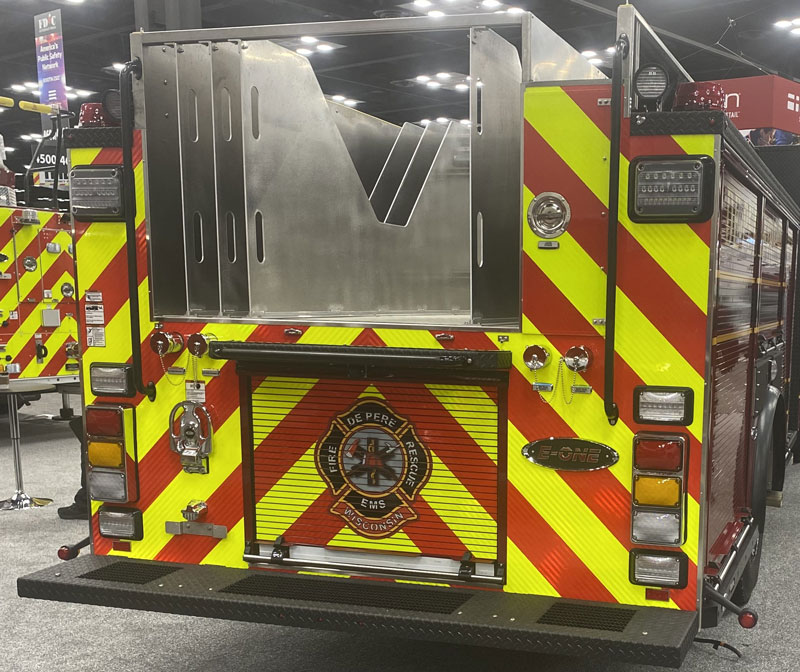
15. This E-ONE has two hand holes on each divider. Extra deep hosebed dividers often have extruded or split tubing reinforcements – if they are specified. Do you specify dividers to be full height of the hosebed?

16. Seagrave provided a single vertical hand hole on this divider. It appears somewhat larger in width extending all the way from the bottom to the top allowing a firefighter’s hand to easily slide the distance without letting go. Not a bad idea.

17. The Toronto Fire Services electric REV Vector has two hand holes in each divider’s vertical edge. With shortened hosebed lengths common with low hosebed designs, hosebed dividers can become very high. At what point do you specify upper horizontal supports to prevent the dividers from leaning over? If you don’t specify an item, it may not exist.
BILL ADAMS is a member of the Fire Apparatus & Emergency Equipment Editorial Advisory Board, a former fire apparatus salesman, and a past chief of the East Rochester (NY) Fire Department. He has 50 years of experience in the volunteer fire service.

